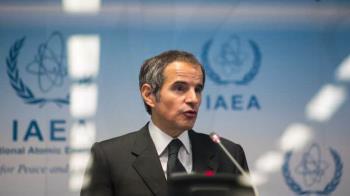Alwaght- The Iraqi Kurdish region’s parliamentary held on September, the first since the 2017 referendum on independence, to a large extent determines the future of the political equations in this region. The Kurdish parties held their first session of the new parliament on November 6, over a month after the election, which allowed the Kurdistan Ruling Party (KDP) to gain the relative majority of the seats.
According to the Kurdish election commission, the KDP won 45, Patriotic Union of Kurdistan (PUK) with 21, the Gorran with 12, New Generation Movement with 8, Kurdistan Islamic Group with 7, and the “Alliance Towards Reforms”, which is comprised of the Kurdistan Islamic Union and Kurdistan Islamic Union, with 5 seats are the leading parties in the 111-seat regional parliament.
It must be taken into account that officially none of the parties and alliances have managed to win the majority of the local parliament. But with regard to the seat-sharing system that gives the Kurdish parties 100 seats and the minorities like the Christians, Assyrians, and the Turkmens the remaining 11 seats, and the representatives of these minorities are traditionally viewed as allies to the KDP, it can be concluded that the KDP is the holding the majority in the parliament.
Over the past few days, the winning parties started movements and consultations to their new cabinet. Three scenarios can be expected for the new government of the autonomous region.
KDP form a majority government
Officially, it is possible for the KDP to form a majority government as it holds 45 seats and has the support of the minorities with their 11 seats which make its seats’ total number meeting the threshold of “half plus one”, required for forming a majority cabinet. But this scenario, on the other side, is highly unlikely with regard to the Kurdish society’s socio-political structure. So far, the KDP has shown no willingness to adopt such a scenario in the northern Iraq region.
Two reasons can send the KDP to be realistic and involve the PUK in its government formation: First, it is well aware of the fact that without the support and will of the PUK it cannot spread its rule over the Green Zone, a region where traditionally under the political and military control of the PUK. Second, while the Kurdish region is in the middle of a massive economic and political crisis, the KDP and the dominant Barzani family will not find it a good choice to shoulder the full responsibility of the dire situation by forming a majority government. So, the KDP will very likely resort to power sharing and distribution of the responsibility to relax the pressure already felt by the ruling party as many point the finger of the blame at Masoud Barzani who arranged the separatist referendum and drew Baghdad crackdown on the north marked by recapture of oil-rich Kirkuk and imposing a several-week air blockade on the region.
KDP-PUK power-sharing government
Having in mind that it is impossible for the KDP to form a majority government, the second scenario is that an alliance is formed by the key power holders, the KDP and PUK, which will pave the way for a shared government. This model was implemented from 1992 to 1995, from 2005 to 2009, and also from 2009 to 2013. Over these years, the two parties run the government under Masoud Barzani and Jalal Talabani of the PUK— something close to a 50-50 power-sharing formula.
This formula proved efficient in the past experiences and has the bigger chance of materialization compared to the first scenario but its implementation at the present time largely faces serious obstacles as they two parties now lack the strategic alliance that once created a strong bond between them. Especially that the KDP tends to weaken the PUK in the present conditions rather than engage it in a government alliance.
Forming a coalition government
The most likely scenario is the formation of a government led by Necherwan Barzani, the current Prime Minister of the KRG. But it could a bit different from the previous one. Following the fourth parliamentary election, held in 2013, a coalition government covering all of the political factions was created. However, in the new situation, it is likely that some of the winners of the September election, including the New Generation Movement, the Alliance Towards Reforms, and even the Kurdistan Islamic Group can face closed doors of the new cabinet. For now, what is glaringly apparent is that the KDP and the PUK will be the key actors. The Gorran Party, as well as the Turkmen minority, are expected to also form the other components of the new government.



























